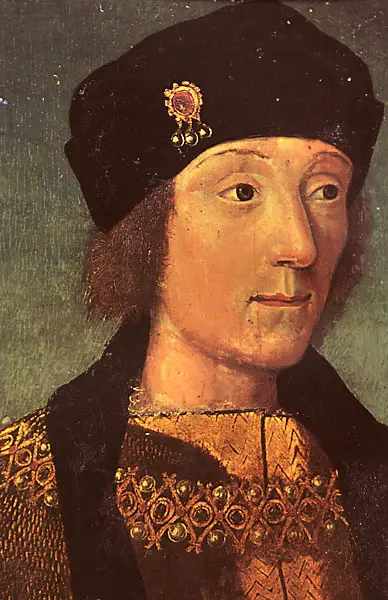Tudor Life
Correct, merchants dealing with the buying and selling of raw wool, silk and linen were known as staplers.
Wrong, merchants dealing with the buying and selling of raw wool, silk and linen were known as staplers.
Correct! Barbers or barber surgeons would also perform surgery on the wounded, do bloodletting, perform enemas and cut hair.
Wrong! Barbers or barber surgeons performed dentistry, surgery, bloodletting and enemas, as well as cutting hair.
Correct!
Wrong! The correct form of address is "Your Grace".
Correct! A boy was "breeched" somewhere between the ages of 3 and 7.
Wrong! Breeching was when a boy of between 3 and 7 years of age moved from wearing skirts to breeches or hose.
Correct! Ale was brewed from barley, which was malted, and water.
Wrong! Ale was brewed from barley, which was malted, and water. Beer was ale with hops added.
Correct! Fish were eaten on Wednesdays, Fridays and Saturdays, as well as during Lent and Advent.
Wrong! Fish were eaten on Wednesdays, Fridays and Saturdays, as well as during Lent and Advent, and the total was 215.
Correct!
Wrong, it is All Saints' Day.
Correct!It was one of the most important feast days of the year.
Wrong, it was the feast of John the Baptist and was one of the most important feast days of the year.
Correct! Statutes (e.g. 1363, 1515) were passed protecting the sport and making archery practice compulsory in the medieval and Tudor period.
Wrong! It was archery. Statutes (e.g. 1363, 1515) were passed protecting the sport and making archery practice compulsory in the medieval and Tudor period.
Correct! They are similar to carrots and were more popular in Tudor times than carrots.
Wrong! They are a root vegetable similar to carrots and which were more popular in Tudor times than carrots.
Correct! It was known as Lady Day, and was the Feast of the Annunciation of the Blessed Virgin.
Wrong! It was 25th March, Lady Day, and was the Feast of the Annunciation of the Blessed Virgin.
Correct! It was often moulded into shapes to imitate animals or fruit and vegetables.
Wrong! It was marzipan, a sweet almond paste, which was often moulded into shapes to imitate animals or fruit and vegetables.



still loving these quizzes! Let’s me pretend I actually know something! 🙂
I’m glad you’re enjoying them. I have fun organising them and then using Tim as a test subject. He got 8/12 so not bad.
I guessed (and was lucky) on skirrets. Now I need to go and find some!
Here’s a photo – http://2.bp.blogspot.com/-XujRb3YOlws/TtujSnu69JI/AAAAAAAAAJg/qm2pT3Wbtx4/s1600/Skirret+offsets.jpg
can’t believe I got the veg one wrong…being a gardener and all, lol!!
And I thought of you as I wrote that one!
:)…got a right ‘beet-root’ face on now…
Really enjoying the quizes. 8/10 this time 🙂
Love these quizzes. Did better on this one
I started off so well !! Lol – got 7/12 this time.
Love these quizzes!
I absolutely stink at the quizzes although I know quite a bit about Henry VIII and the Tudor life!!! Can’t wait for a new quiz 🙂
Just joins the society and did this test. Learned some new things which is why I joined!!!! Love quizzes